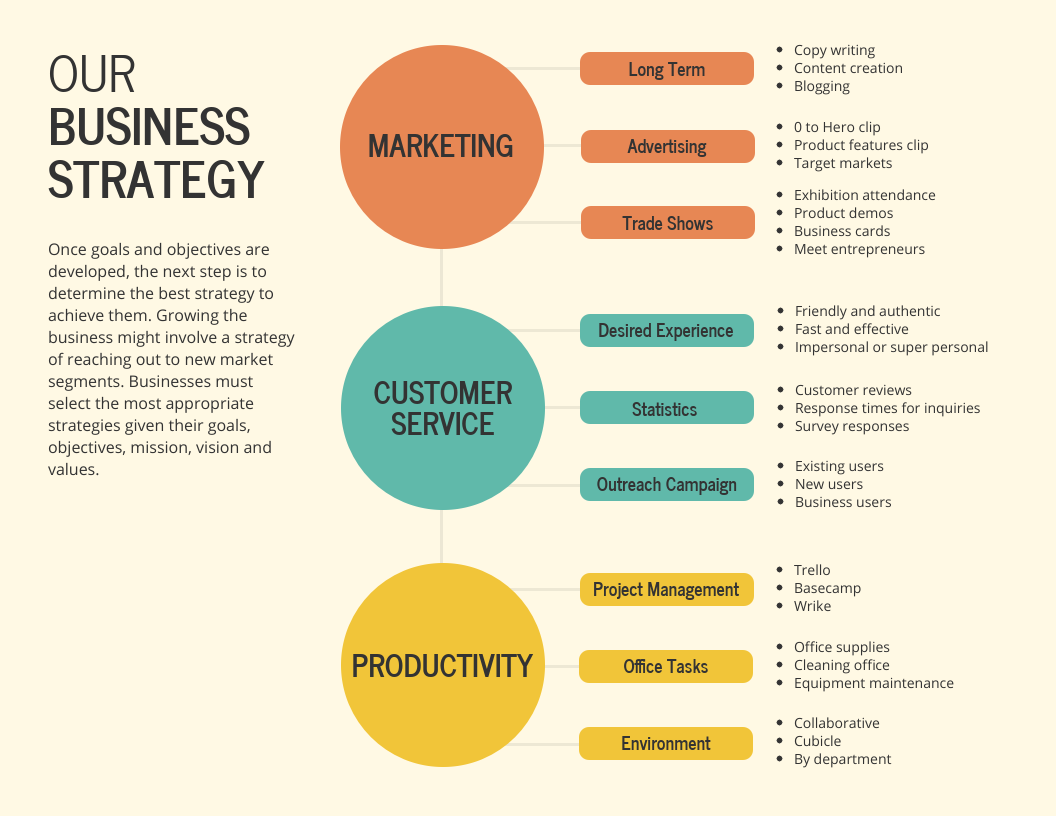Whether it’s getting fit, learning a new skill, setting KPIs or developing a business strategy — goal-setting is an integral part of our personal and professional lives.
But how many times have you set goals and failed to achieve them?
It’s certainly not enough to jot down your goals on a piece of paper. What you need is a more organized approach and a realistic action plan. One of the most effective techniques you can turn to for goal-setting is mind maps.
This powerful visualization tool helps you organize your thoughts, make meaningful associations and continually track progress, enabling you to set (and achieve) productive goals.

Source: Venngage
Let’s take a look at how you can use mind maps to set goals in five simple steps.
Brainstorm goals
The first step is to brainstorm all the possible goals you want to achieve. Jot down everything that comes to your mind.
Here are a few questions you can ask yourself:
- What do you want to achieve?
- What does success look like to you?
- What drives you?
- Where do you see yourself (or your business) in 5 to 10 years?
Asking the right questions will help you discover and brainstorm meaningful goals. At this stage, don’t think about how realistic or achievable they are — just focus on getting all your thoughts out on paper.
Establish focus areas
By this point, you should have a laundry list of goals. While traditional goal-setting ends here, this is where the mind-mapping technique begins.
When you go through every goal, you’ll start identifying common focus areas. For instance, if you’re setting business goals for your newly found startup, the key areas of focus are likely to be financial, marketing, and recruitment goals.
So, find common threads and establish key focus areas that will give your goal-setting exercise some direction and simplify task management.
Make meaningful associations
Now that you have the key focus areas laid out, categorize the broad-level goals and assign them under their respective specific areas.
For example, if one of the goals you wrote was strengthening your website marketing or content strategy, put that under ‘marketing’. Similarly, setting up a campus hiring plan will sit under ‘recruitment and human resources’.
This process of divergent thinking and making associations helps you visualize your thoughts better without getting overwhelmed.
Create action plans
The best goals are SMART — specific, measurable, attainable, realistic and timely.
“Increase revenue” might be one of your broad goals but you can’t leave it at that. It’s essential to drill it down further and turn it into a SMART goal.
“Increase revenue by 30% in 6 months” on the other hand is an example of a SMART goal.
So, look into every branch and set specific action plans with timelines for each of the goals. A detailed plan will pave the way for a clearer roadmap to success.
Monitor progress
Once you’ve broken down goals into actionable tasks using mind maps, you’re in a better position to dive right into it without wasting time or overthinking.
That’s not all, this productivity tool also gives you the flexibility to add or remove tasks as you proceed while monitoring progress along the way.
It’s a good idea to take a print out of the mind map and paste it where you can see it everyday or save it as an image on your phone so you’re constantly reminded of your goals.
Conclusion
There’s a lot we may want to achieve but the only way to make that happen is by setting productive goals — and mind maps help you get there.
So, work smart — use mind maps to visualize and attain your goals in an organized manner.
___________________________________________________________________________
Simki Dutta is a content marketer at Venngage, a free infographic maker and design platform. When she’s not working, she can be found refreshing her Twitter feed and binge-watching Netflix shows.


